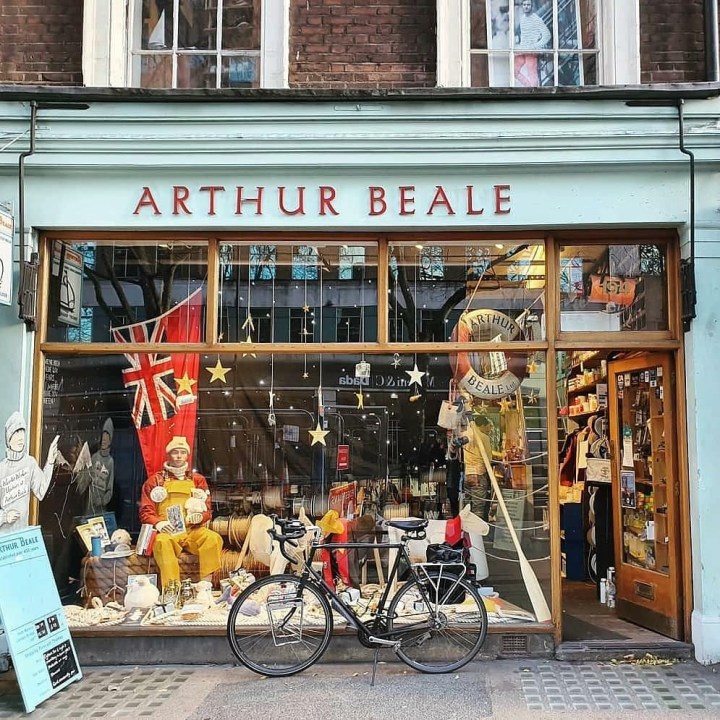So farewell then Arthur Beale, you were the last of the great chandler shops. You and I had little in common…
This is how I imagine E.J. Thribb poem starting, and Private Eye’s Poetry Corner would do well to eulogise the passing of one of London’s most eccentric shops. It is to the credit of all Englishmen that a shop like Arthur Beale was able to survive into 2021. The audaciousness of running a chandlers on prime real estate in a notoriously expensive city, when the outboard motor was invented in 1870, does hint as to how we managed to beat the Germans twice. It is to our national shame that its Shaftesbury Avenue doors will be closing for good, a victim of the Coronavirus, and the unscrupulousness of landlords, who seem to know the price of everything but the value of nothing.
Savile Row has less than 50 per cent capacity, with replacements in the empty shops all seeming to refer to themselves rather insecurely as ‘pop ups’.
Alas, Arthur Beale is not alone. Similar institutions have fallen victim to Covid, and without the support required to keep up the only retail spaces with real character left, more are sure to follow. Cordwainers Fosters & Son is one. A 200-year-old presence on Jermyn Street and peer reviewed by Tony Gaziano of Gaziano & Girling, as the best ready-to-wear shoes on the market, is shutting down too. Staggeringly, Savile Row has less than 50 per cent capacity, with replacements in the empty shops all seeming to refer to themselves rather insecurely as ‘pop ups’.
What doesn’t bear thinking about is who might be next, or how these eccentric endangered species might disappear altogether. The best examples you can find are in the arcades off Piccadilly, most notably The Armory of St. James’s, a Piccadilly Arcade institution where you can buy military figurines for wargames and what not. A few doors down on the Arcade was a shop called Iconastas, where wonderfully niche Russian Icons and Soviet memorabilia were sold. This unfortunately had to close after the death of owner Chris Martin-Zakheim, and remains empty, unlikely to see anything nearly as interesting taking its place.
Shops like D.R. Harris, and Taylors of London, all shops that look like they’ve not had a lick of paint since the war, in a good way, are few are far between these days. The Pullman Gallery, which may still have (unless someone with a dark sense of humour bought it), Herman Goering’s boar-tusk cigar cutters would be deserving of a state funeral if it closed. Meyer & Mortimer (also known as Jones, Chalk & Dawson depending on what regiment you are in), a tailor of the most traditional order that goes back to 1790, has had to move out of its premises on Sackville Street with the most wonderful, old-fashioned shop window, and go upstairs, where the light is more fluorescent and the rent is less of a swindle – landlords of tailors all say they work hard to help but I know of no tailor who agrees.
One thing worth mentioning on a positive note is that James Smith & Sons, the extraordinary-looking Holborn umbrella shop with its Victorian signage, is able to open back up. Though the pessimist in me, which nowadays I am sorry to say is much less inhibited, wonders whether that may only be short lived. Let’s hope not. Politicians are useless, the landlords are brutal, and sympathy is dwindling. What happens next, how they survive, who revitalises demand and popularity, and how we manage to ensure the survival of shops like this into the second quarter of the 21st century, is quite baffling, frankly.







Comments